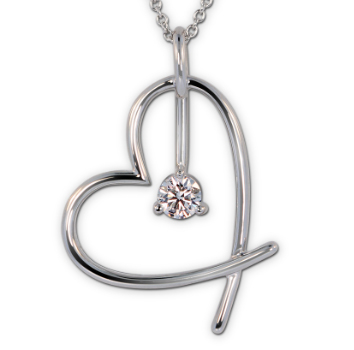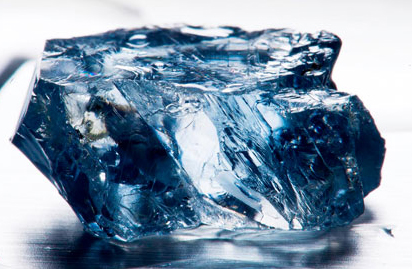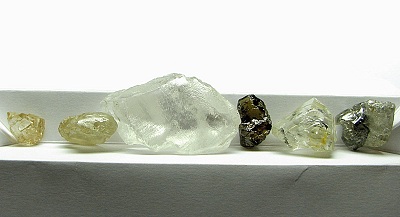
It is expected diamond prices would normalise in the lean season beginning June.
Mining at De Beer's Venetia mine in South Africa, the biggest in that country, saw disruptions early this year, owing to heavy rains followed by devastating floods at the mine site. Mining has been resumed, albeit at a moderate pace, and De Beers hopes operations at the mine would return to normal in the second half of this year, helping the company maintain production at least year's levels. Last year, the company produced four million carats of diamonds in South Africa. Of these, three million carats were mined at Venetia.
"Availability of rough diamonds between 10-50 cents was scarce in the last couple of months. Consequently, prices of both rough and polished diamonds in this segment rose five to six per cent in the last 15 days. Overall, prices of rough and polished diamonds have risen 10-12 per cent in the last two months," said Umesh Parekh, managing director of Kolkata-based Shree Ganesh Jewellery House.
After a staggering 57 per cent rise in import of rough diamonds in December 2012, imports fell sharply in the three subsequent months. However, in April, imports rose 18.48 per cent, as Indian jewellers rushed to bridge the deficit created by the robust demand. Despite a six per cent rise in overall rough diamond imports, jewellers were ready to pay premium to secure supply from independent buyers.
At 6.4 million carats, De Beers, which controls about 40 per cent of global rough diamond supplies, recorded a three per cent rise in rough diamond production in the quarter ended March. Varda Shine, executive vice-president of De Beers Global Sightholder Sales, had recently said this year, the company's rough diamond output would stand at last year's levels.
"Now, there is a shortage of rough diamonds. But looking at the lean season ahead, the shortage is unlikely to affect jewellers' business," said Mehul Choksi, managing director of Gitanjali Gems, one of India's largest branded jewellery manufacturers and retailers.
In the ongoing wedding season, overall jewellery sales rose 25-30 per cent. As the wedding season accounts for about half of jewellers' annual sales, business during this season points to their prospects during the rest of the year.
Choksi said the rising diamond prices compensated for the fall in gold prices, and this helped Gitanjali Gems keep jewellery prices unchanged.
Meanwhile, jewellers have refrained from fresh bookings, amid expectations of lean sales during the coming monsoon season. For the festival season, fresh orders are expected to start in July.


 .
.
 .Johan
Dippenaar, the CEO of Petra, said, “We are delighted to have concluded
such a successful sales process for this important blue diamond. The
process was highly competitive in terms of bids received, due to the
incredible rarity of a blue stone of such size and quality. This result
further serves to highlight the Cullinan mine’s unique position as the
world’s most important source of blue diamonds.”
.Johan
Dippenaar, the CEO of Petra, said, “We are delighted to have concluded
such a successful sales process for this important blue diamond. The
process was highly competitive in terms of bids received, due to the
incredible rarity of a blue stone of such size and quality. This result
further serves to highlight the Cullinan mine’s unique position as the
world’s most important source of blue diamonds.”















